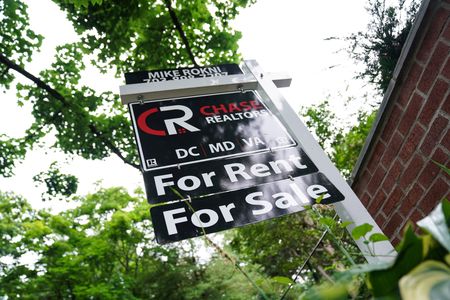
WASHINGTON (Reuters) – Sales of new U.S. single-family homes dropped to their lowest level in just over two years in June, the latest sign that rising mortgage rates, combined with higher prices, were dampening demand for housing.
New home sales tumbled 8.1% to a seasonally adjusted annual rate of 590,000 units last month, the lowest level since April 2020, the Commerce Department said on Tuesday. May’s sales pace was revised down to 642,000 units from the previously reported 696,000 units. Sales fell in the Northeast, the West and the densely populated South, but surged in the Midwest.
Economists polled by Reuters had forecast that new home sales, which account for a fraction of U.S. home sales, would slip to a rate of 660,000 units.
Sales declined 17.4% on a year-on-year basis in May. They peaked at a rate of 993,000 units in January 2021, which was the highest level since the end of 2006.
The contract rate on a 30-year fixed-rate mortgage is averaging 5.54%, according to data from mortgage finance agency Freddie Mac. The rate has risen more than 200 basis points since January as inflation soared and the Federal Reserve aggressively tightened monetary policy.
The U.S. central bank is expected to raise its policy rate by another 75 basis points on Wednesday. That would bring the total interest rate hikes since March to 225 basis points.
The housing market is one of the sectors most sensitive to interest rates. Data last week showed sales of previously owned homes fell for a fifth straight month in June. Housing starts and building permits also declined further last month, but a collapse is unlikely because of a severe housing shortage.
Softening demand could help bring housing supply and demand back into alignment and slow price growth.
The median new house price increased 7.4% in June from a year ago to $402,400. There were 457,000 new homes on the market at the end of last month, up from 447,000 units in May.
Houses under construction made up roughly 67.0% of the inventory, with homes yet to be built accounting for about 24.1%. At June’s sales pace it would take 9.3 months to clear the supply of houses on the market, up from 8.4 months in May.
(Reporting by Lucia Mutikani; Editing by Paul Simao)

